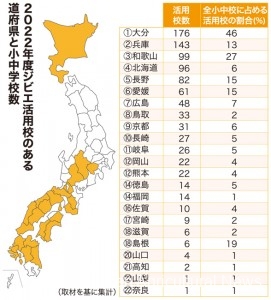| TOKYO, May 14 – According to the farm ministry of Japan, a substantial increase is seen in the number of Japanese primary and junior high schools incorporating gibier, including meat from locally hunted deer and wild boars, into their school lunch menus. The figure has increased to nearly 1,000, a record-high and 2.5 times compared to five years ago. This trend comes amidst ongoing reports of agricultural damage caused by wild birds and animals nationwide. As the bill for the amendment of the Basic Act on Food, Agriculture and Rural Areas, which is expected to pass during the current Diet session, encourages the use of wildlife meat for school lunch, these gibier school lunches in some prefectures are likely to attract attention as leading examples of the “local production for local consumption” and “dietary education” initiatives.
The ministry conducts a nationwide survey annually on the status of local governments’ planning of measures to prevent wildlife damage to agriculture, forestry, and fisheries. In 2017, the survey started to include a question asking the number of schools serving gibier school lunches, but the results have not been disclosed. However, the Japan Agricultural News confirmed in an interview with the ministry that 387 schools in 19 prefectures served gibier school lunches in fiscal 2017 and 933 schools in 23 prefectures in fiscal 2022. That means a new record and an increase of 2.5 times in five years. Oita Prefecture topped the others (176 schools, 46% of all primary and junior high schools in the prefecture), followed by Hyogo (143 schools, 13%) and Wakayama (99 schools, 27%). In 2018, the Oita prefectural government established a new subsidy program for purchasing gibier for school lunches. That has successfully triggered a notable movement among city and town governments, including Nakatsu City, to introduce community-wide initiatives to coordinate hunting, meat processing, distribution, and school lunch preparation, as well as develop new kids-friendly menus like venison curry. |


